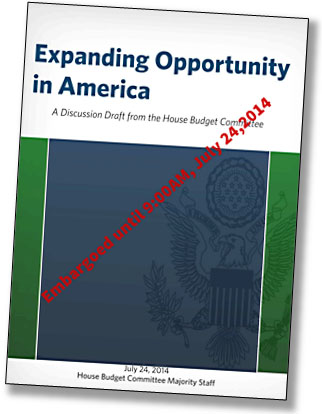 Paul Ryan is out today with his anti-poverty proposal, and my first reaction after a quick skim is that I’m surprised at how limited it is. Maybe that’s fine. There’s no law that says every white paper has to offer a comprehensive solution to every federal program ever invented. In any case, Ryan is offering ideas primarily in three areas:
Paul Ryan is out today with his anti-poverty proposal, and my first reaction after a quick skim is that I’m surprised at how limited it is. Maybe that’s fine. There’s no law that says every white paper has to offer a comprehensive solution to every federal program ever invented. In any case, Ryan is offering ideas primarily in three areas:
Experimentation. In a few select states, he wants to consolidate a number of federal poverty programs and then allow states to use the money to test different approaches to fighting poverty. It would be revenue neutral (“this is not a budget-cutting proposal—this is a reform proposal”) and states would have to agree to a rigorous program of testing and research to evaluate how well their plans work.
EITC. Ryan wants to expand the Earned Income Tax Credit. This would be paid for by unspecified cuts in other anti-poverty programs.
Education. This is a bit of a hodgepodge and requires some reading between the lines. Mostly, he seems to want to block grant spending on early childhood programs; increase federal support for K-12 vouchers; “modernize and reform” tuition assistance for colleges; and block grant job training programs.
Ryan also has some ideas about prison reform and loosening occupational licensing standards. I’ll try to have more on this later after I’ve read his paper more thoroughly. Overall, my initial reaction is that I like the idea of more rigorously testing different anti-poverty approaches, but I’m pretty skeptical of Ryan’s obvious preference for eventually eliminating most federal anti-poverty programs and simply sending the money to the states as block grants. This is a longtime conservative hobbyhorse, and not because states are models of efficiency. They like it because it restricts spending, especially during recessions when federal entitlement programs automatically increase but block grants don’t. That may please the tea party set, but it’s bad for poor people and it’s bad for the economy, which benefits from countercyclical spending during economic downturns.
This is just a quickie reaction. More later.

















